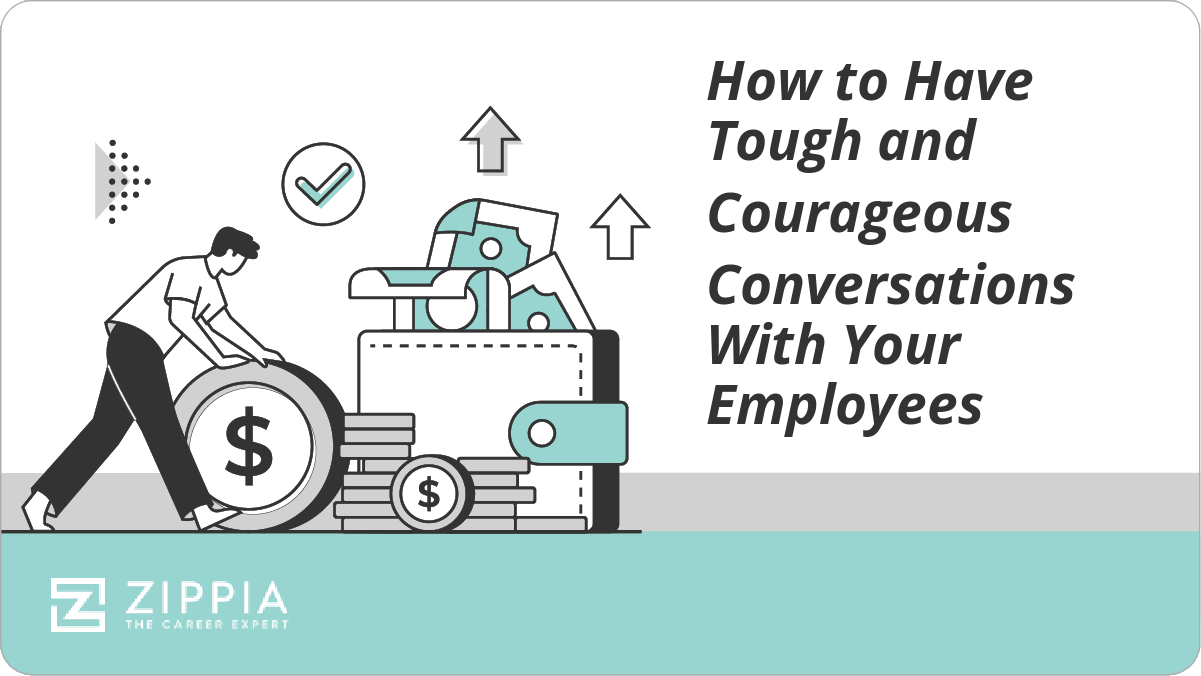Summary. An employee value proposition (EVP) is a business branding strategy that markets what the organization offers to its employees in order to attract and retain a quality workforce.
You want the best candidates and employees, but so do your competitors. When candidates compare job opportunities, they are thinking in terms of more than just money. Other factors come into play that answers the question, “why should I work for this company?”
Therefore you need to show why it is worth working for your organization. In the end, your EVP will determine whether or not your potential and current employees decide to dedicate their time and energy to you.
Key Takeaways
-
An EVP is defined by compensation policies, benefits packages, career development opportunities, workplace environment, and company culture.
-
To develop an EVP, visualize your ideal candidate, assess your current EVP components and get feedback from employees.
-
Make your EVP specific and unique to stand out against competitors.
What Is An Employee Value Proposition?
An employee value proposition is the value a company offers to its employees in return for their labor. This includes compensation and benefits, as well as other enticing features such as career development, work environment, and company culture.
An EVP is a business branding strategy used to attract and retain high-quality candidates. It answers questions asked such as:
-
What’s in it for me?
-
Why should I work for your company?
-
What makes your company a great place to work?
-
What if I want to work for a different company?
A unique, attractive EVP can be the difference maker when a person needs to choose between companies.
Therefore, it is critical your company has a refined EVP that sends the right message to potential and current employees. Your EVP needs to be centered on your mission and values and show why working for your company is worth it.
Why Is An Employee Value Proposition Important?
An employee value proposition is important because it attracts and retains the best-fitting candidates for an organization, which leads to greater productivity.
The clear communication that comes with a well-developed EVP allows both potential and current employees to understand exactly what they will get in return for working with you.
This is the first step in creating trust and engagement with your workforce. With trust and engagement comes motivation and productivity. Your employees will feel confident and secure that they are appropriately valued for their efforts. This effective workforce is key to your organization’s success.
The Components Of Employee Value Proposition
There are five main elements that make up an employee value proposition. They are:
-
Compensation. This is the first thought most people have when they think about what value a company offers its employees. After all, most people have jobs to meet their financial needs. Compensation can include:
-
Salary
-
Hourly wages
-
Bonuses
-
How compensation is calculated
-
How often compensation is increased
You should note that compensation is not merely about the amount of money but also how and when it is offered. Employees want to work for companies that offer variety and have fair compensation policies.
-
-
Benefits. Benefits are policies a company offers to its employees that meet additional needs to improve their quality of life, such as:
-
Health insurance
-
Paid time off
-
Sick days
-
Retirement plans
-
Education or training reimbursement
-
Family plans
Benefits are perks, but they are important to the well-being of employees because they help create a sense of stability and security. Your company will want to strongly consider that many talented individuals value their benefits package as high, if not higher, than compensation.
-
-
Career development. Career development plays an important part in a company’s EVP, especially for employees who value their professional growth. Ambitious and dedicated employees seek opportunities that provide them with the chance to:
-
Learn new skills
-
Attend training and seminars
-
Network with talented individuals
-
Receive constructive feedback and support
-
Prove their capabilities beyond their current role
This is an investment in the future of your employees. If your company needs fresh blood, then a focus on career development can be a great way to bring in skilled candidates who value growth.
At the same time, your current employees will appreciate the opportunity to develop and strengthen their careers. In all cases, your company comes out of it with a stronger workforce.
-
-
Workplace environment. This element concerns how employees regard their physical workspace. It contains qualities such as:
-
Remote availability
-
Opportunities to travel
-
Office location and commute
-
Office design and layout
-
Food, drink, and recreational offerings
-
Up-to-date equipment and systems
Whatever your environment is, don’t take for granted that employees want the best possible workspace for themselves. They want an environment that complements their social and personal needs. Even if your company is fully remote, there are still many parts to a workplace environment that employees take into consideration.
-
-
Company culture. A company’s culture sums up how an organization approaches its business, and it is defined by factors such as:
-
Mission statement and values
-
Communication standards
-
Evaluation procedures
-
Administrative organization
-
Systems of accountability
-
Social responsibility
-
Interpersonal relationships
-
Diversity and inclusion
-
Leadership structure
-
Transparency
Company culture is a critical element of EVP. Be aware that a company’s culture is reflected in everything a company does, and this includes how it approaches other elements of its EVP.
Even if an employee is happy with their compensation or benefits, they still need to feel valued for their efforts and that their values align with their company. Otherwise, employees will become less motivated, which will reduce productivity and result in a high employee turnover.
How Do You Create An Employee Value Proposition?
An effective employee value proposition takes time and effort to develop, but it can be reasonably accomplished if you:
-
Visualize your ideal employees. Before you begin to attract or retain high-quality employees, you first need to define what “high quality” means to you. By visualizing your ideal candidate, you can clarify who you are looking for and center your EVP around these qualities. Consider:
-
Skills
-
Experience
-
Professional philosophy
-
Character traits such as commitment and dependability
-
Interpersonal abilities
Remember, no one is perfect, so don’t get tied down by your ideal candidate. However, the traits of your ideal candidate set a tone that will guide you as you create your EVP.
-
-
Understand what you currently offer. Do some research on your company and use the five components of an EVP to organize the value you provide to employees:
-
Take a look at your current compensation and see if it is competitive.
-
Look into your benefits package to see how extensive it is.
-
Consider what career development opportunities you provide.
-
Analyze your physical work environment and come up with a pros and cons list.
-
Articulate your company’s culture and base it on current values and procedures.
You may think you already know all this, but it can help to review and organize the information. This will provide a new perspective and be a useful tool to use in future company evaluations. Besides, your company may have changed over time, and after further review, you may discover some of your items are incorrect or out of date.
-
-
Get feedback from current employees. An EVP is just as much about retaining your current employees as it is about attracting new ones. This means that your current employees provide invaluable knowledge about the current state of your EVP, or lack thereof, which you can use to make improvements.
Use surveys or other tools to get a clear picture. You might want to consider asking such questions as:
-
Do you feel your salary is competitive?
-
What does this company offer that is most important to you?
-
Does this company align with your values?
-
What do you think makes our company unique?
-
How do you feel about your benefits?
-
How do you feel about your work environment?
-
How do you feel about the culture of our company?
Gathering employee feedback can have the added benefit of improving morale because employees appreciate when their voices are recognized. People want to work at a place that caters to their needs. Potential candidates will also see this and be enticed to join.
-
-
Make your EVP specific and unique. Once you think you have the general gist of your EVP, you need to hone it so that it stands out among your competitors. It can also help if you create EVPs for specific roles, especially if your company is large.
For example, you may want to have different EVPs for managers than you do for regular employees. One way to stand out is to provide specifics, such as:
-
Amount of vacation days you offer.
-
Types of travel and education reimbursements
-
Pictures and videos of your workplace.
-
Affirmations from employees and clients regarding the company’s mission.
-
Examples of career development in action.
Be careful not to go overboard on specifics. Your EVP is not a job description, though it can be an important part of it.
-
-
Share your EVP. An EVP can be used in all sorts of ways. You may include it in your job descriptions so that candidates can get a picture of what it is like to work at your organization. Some other places that you can use your EVP include:
-
Company websites
-
Web advertisements
-
Multimedia presentations
-
Employee appreciation events
-
Job offer letters
How you use your EVP is up to you. Just remember that its purpose is to make potential and current employees happy to see exactly what your organization offers them.
-
Tips to Improve Your EVP
An employee value proposition is a dynamic branding strategy that your company should always look to improve if you want to stay ahead of your competitors. Consider the following tips to help you make your EVP an asset to your company’s success:
-
Use exit interviews to improve your EVP. Whether or not an employee leaves on good terms, an exit interview is a great chance to receive honest feedback. Employees at exit interviews can open up and reveal to you issues you may have taken for granted. With this knowledge, you can improve your company and your EVP.
-
Measure and evaluate with key performance indicators (KPIs). Your EVP will benefit from routine evaluation. To do this effectively, you will want a system of standardized metrics that can help you determine success.
-
Make sure your EVP accurately reflects reality. There is no quicker way to disillusion your employees if your company does not offer as much value to its employees as it claims.
-
Make your EVP compatible with different formats. There are many different places your EVP can be used, such as in a job description or on social media. If you want to broaden your reach, then you will want to consider incorporating your EVP in different mediums such as text, infographics, and video.
-
Research your competitors. See how your competitors come up with their own EVPs and compare them to yours. You need to know how your candidates and employees could be convinced to choose someone else over you.
Examples of Employee Value Proposition
Here are a couple of examples of what an EVP can look like:
-
At ABC Inc., we value sharing our success with our employees. That is why, along with competitive salaries, we offer great benefits such as a flexible vacation plan, unlimited sick days, and automatic stock options. We also strive to provide first-rate health insurance and retirement plans.
Still, we are more than just our compensation and benefits packages. We are a team and value the insight of our employees. We organize routine feedback sessions to make sure responsibilities and productivity have been valued appropriately. ABC Inc. believes we are stronger together and strives to unite our workforce through mutual growth.
-
When Smith & Jones was founded, its owners believed that its employees were key to innovation. Without a motivated workforce, the company would be at risk of complacency and stagnation. To this day, we care that our employees feel excited to come to work and use their creativity for new ideas.
We provide routine raises to recognize this behavior, as well as a multitude of benefits to ensure their personal health and future.
We also encourage constant learning, and our tuition reimbursement program accepts nearly all certified programs in the country. Smith & Jones wants its workers to feel like they are the sparks that set off the engine of industry and the future.
Employee Value Proposition FAQ
-
What is the difference between an employee value proposition and an employer brand?
An EVP is a component of an employer brand. The EVP explains what value it offers its employees, while the employer brand is the overall message an organization wants to promote to the public. Both play a role in attracting and retaining a talented workforce. However, the EVP is more specific in its aims.
-
How do you measure an effective employee value proposition?
Measuring an effective EVP requires feedback from employees and evaluation of your EVP components. An EVP is useless if you ignore the needs and opinions of your workforce. Set up a system of surveys and interviews to get direct feedback from your employees.
You should also monitor employee behavior, such as engagement, to determine if your workforce is satisfied. Based on the information you obtain, you should then make necessary adjustments. Continually repeat this process to strengthen your EVP.
-
Who is responsible for an employee value proposition?
Human Resources is responsible for developing your employee value proposition.
However, H.R. should work with the executive management, as well as other departments, to make sure the EVP matches the reality of working at the company.
H.R. will analyze all components of the EVP, as well as employee satisfaction, to come up with a final EVP.
References
-
Harvard Business Review – Rethink Your Employee Value Proposition
-
University of Canberra – Developing an Employee Value Proposition
- Workplace Communication
- Email Tips For Effective Leadership
- How To Improve Email Communication With Your Employees
- How To Prepare Managers To Communicate Change
- Congratulations Letter To Employee
- Appreciation Letter To Employee
- Employee Value Proposition
- Morale Booster Quotes
- Types Of Workplace Bias
- Team Exercises For The Workplace
- How To Write An Employer's Reference Letter (With Template + Sample)





